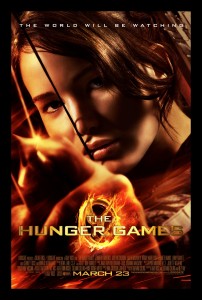Every summer the guitars and ukuleles appear in the garage of the cabin by the lake. She calls a tune, he asks for a brush-up on the chords, a new arrival joins the circle, and we sing. Somebody makes up a new verse. Another takes a uke solo. Yet another pulls out a harmonica and draws excited exclamations. Everyone’s involved; we even gave the young’un an egg shaker.
Down the road a teenager listens to music in his room. It makes him want to dance. It’s background for homework. It lets him tune out from his problems. He’s not musical; his descriptions might contain the words ‘catchy’ and ‘beat.’ He’s just as likely to refer to a song as an electronic file. But he can appreciate the skill and creativity it took to compose, arrange, and perform. Listening to other musicians, appreciating their contributions to the world of art, can be valuable, right?
Not entirely. When entertainment becomes a commodity it becomes oppressive. Music becomes just another consumer good, something to be bought and sold. That guy in his room is being oppressed by his own earbuds; a ‘culture industry’ is forcing sameness and passivity down his ears with every piece of entertainment it mass-produces.1 Adorno argues that any choice we think we have in popular culture is really the choice between two similar molds; the choice between two top-40 songs is as meaningless as the choice between two different parking spaces at the mall. The German word for entertainment is Unterhaltung: ‘holding under.’ The culture industry, by providing such entertainment, can take away freedom, suspend thought, and block happiness, because there are a thousand other ways to be and we don’t know what we’re missing.
Does the guy in his room get any leeway with Adorno? One might argue that some music doesn’t suspend thought and render us passive; we are actively involved, part of the music. Singer-songwriters make it easy for us to insert ourselves right into their music because they sing directly to an individual: “Baby, we found love right where we are,” “I’m yours,” “Don’t let me be lonely tonight,” “You are the only one,” “You are my only one.” The list goes on. It’s easy to feel like Ed Sheeran and James Taylor are singing only to you, and the intimacy of the genre makes you important, makes them vulnerable, makes you believe you’re seeing the real them. We are made to feel individual, but everyone is hearing the same “You are the only one;” everyone is the same individual. This is the paradox, the trick of the culture industry: they are making us feel like individuals while perpetuating uniformity. Consuming this type of music isn’t actually any better than others, singer-songwriters just try to hide it.
If there isn’t a genre that escapes the industry, then what about live performance? If passivity is to be avoided, interactive and improvisatory performances could be the alternative. They’re unique, fleeting, and full of spontaneous energy. Performances can’t be recreated, which someone could argue removes it from the culture industry’s sameness. However, we’re still passive at a live performance. The fundamental problem with performances that make them little better than recordings is the divide between—the existence of—the producer and the consumer. Performances sell us the illusion that we’re a part of the music that’s being made; we applaud every solo, we sing along, we touch hands with the singer. But really, that divide is clear as can be at a live performance. It’s a show. There’s an audience, a stage, spectators, applause; these things separate us from the music as consumers. We are just observing, being entertained, being held as a servant to the culture industry.
I am concerned with culture that cannot be industrialized; culture of which there is absolutely no way to corner it into becoming a commodity. Performances, shows, hit singles, iTunes, stages, applause—only when those are absent have we reached a free and independent culture. Such a culture erodes to the point of destruction the line between the artist and the spectator, the producer and the consumer. Music is at its most valuable when it is not a commodity, and can’t be made one. The way to achieve this is not by focusing on the ‘what’ of music, but the ‘how.’ Adorno1, and even Adorno’s critics3 concern themselves with the structure of the music itself, and seem to assume that only particular people can produce it.
On the contrary, more important is our interactions with the music and with each other. Yes, the singer-songwriters and jazz musicians sell us an illusion, but it’s the illusions of something that we can indeed have. If the industry makes us passive, then the most thoughtful and interactive music will be the most conducive to opposing it. Of course, I mean the best music is the music we make. Music is meant to be made and shared, not consumed. Active, participatory, communicative, and interactive music is impossible to commoditize and as such is outside the culture industry’s clutches. It’s not just an alternative to the industry, several qualities make it the industry’s opposite.
The culture industry suspends thought and perpetuates sameness. Folk and jazz music done right encourage thought and dialogue. When the guitars come out in the summer we listen to each other, use each other’s ideas, twist them and make them our own. Our minds are alive, anticipating and responding, interacting with the music and the circle.
Music is language;2 we must speak it and understand it in order to have any use for it. The best jazz music is a conversation:2 from Kind of Blue to Boss Tenors it’s wonderful to hear the rhythm section players communicating with each other and with the horn players. Bill Evans takes a rhythm Miles played, Jimmy Cobb latches on, they hold it for a few bars then let it go. (If someone doesn’t speak the language, they can be taught. People who ‘can’t sing’ usually just mean they forgot. Sing to an eighteen-month-old and they will more than likely sing back in the same key.)
You might think me contradictory for praising mass-produced recordings. But the purpose of listening to recordings is to observe. The tracks on Kind of Blue are all first takes; the spontaneity and creativity are palpable right from the opening bass riff of “So What.” But that’s the players. For them, the music is worthwhile because they aren’t under the hand of the industry. For us, it’s not enough to just listen, because the tracks are set in stone, able to be repeated. For us, it becomes the same as the rest unless we learn from the masters and then do it ourselves.
The essence of ‘circle music,’ including folk and jazz, can’t be captured and mass-produced. Sure, you can record people playing such music, but then it can become just as oppressive as any other music. That’s why everyone interested in music needs to play and sing and experience it themselves. The opposite of the culture industry is the campfire. If we do it ourselves we might find thought and freedom and connection in the art that is music.
1Adorno, T. & Max Horkheimer. The Culture Industry: Enlightenment as Mass Deception. Dialectic of Enlightenment. 1944.
2Monson, I. Saying Something: Jazz Improvisation and Interaction. Chicago, 2009.
3Witkin, W. W. Why Did Adorno Hate Jazz? Sociological Theory 18:1. Washington: 2000.


